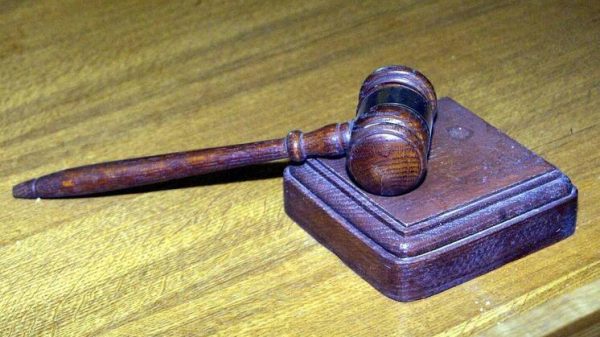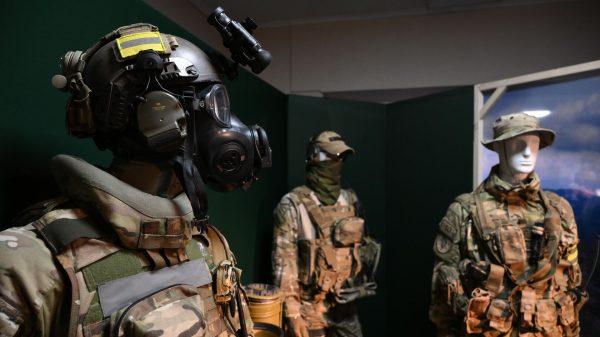The 2020 presidential election is already unlike any other America has ever seen.
So far, 61 million people have voted early – either to avoid long lines or Covid-19 exposure during an unprecedented year, according to US Elections Project data from University of Florida professor Michael McDonald. A week before election day, Americans have already surpassed 2016 early voting totals.
But perhaps even more striking than turnout along is that almost 87 million people requested mail-in ballots, and more than 21 million people have already returned them. This includes millions in key swing states, which the Guardian and ProPublica have been tracking.
These numbers come after Donald Trump and other Republicans spent the last months falsely claiming vote by mail will lead to fraud. Since then they have sought to curb mail-in ballot deadlines in battleground states like Pennsylvania and North Carolina, and limit the number of drop boxes for people to safely drop off their mail-in ballot amid postal service delays.
Because of the surge in mail-in voting, which can take days to count, Americans are unlikely to know the results of the election on 3 November. And there is already concern Trump will use the period of uncertainty to claim he won before ballot totals are final. But is voting by mail really a threat to the election? We tried to answer some questions.
What is mail-in voting and why is it such a big deal this year?
Mail-in voting describes the process voters can use to cast their ballots without having to appear in person at a polling place. Every state allows voters to cast a vote by mail in some form, though the rules around who is eligible to do so vary widely from state to state.
With the exception of a few states, voters are required to submit an application and then, once election officials verify their eligibility, receive a ballot. A handful of states – including Washington, Oregon and Colorado – automatically mail all eligible voters a ballot. This practice is often called universal mail-in voting.
About a quarter of all of the votes 2016 and 2018 were cast by mail, according to federal data. But that number is growing this year because of concerns about voting in person amid Covid-19. McDonald, the professor at the University of Florida who closely tracks voter turnout, estimates mail-in votes will account for about 50% this year. And during the primaries this year, election officials in many states saw an unprecedented surge in the use of mail-in ballots. In Georgia, for example, more than 1.1 million people voted by mail in the state’s June primary, more than four times the state’s previous record of 219,731 in 2018.
That surge is prompting a host of concerns about whether states can handle the election . Many places are not accustomed to seeing high volumes of mail-in ballots and election offices – already on shoestring budgets and staffed by just a few employees – have been struggling to keep up with the demand. Congress has allocated just $400m of the $4bn the Brennan Center for Justice estimates states need to successfully run elections.
Play Video
5:32
Voter suppression: how Trump is undermining the US election – video explainer
Is mail-in voting different from absentee voting?
No, the two terms are often used interchangeably. Traditionally, people who requested ballots were called “absentee voters”, because they were likely to be absent from their polling place on election day, according to the National Conference of State Legislatures (NCSL).
There are instances of absentee voting for military members going back to the American revolution, but as mail-in voting has become more widespread among the general public over the last 30 years, the terminology has become more flexible and states refer to the practice as both absentee and mail-in voting. Regardless of the term, the process is the same: a voter submits a request for a ballot and the election official sends them one once they verify they are eligible.
Donald Trump and the White House have repeatedly tried to make a false distinction between “absentee” and “mail-in” ballots. Trump has argued that “absentee” ballots, which he uses, are acceptable because a voter needs an excuse (such as illness or military duty) to use them while “mail-in” ballots will lead to fraud and are problematic. But 34 states do not require a voter to give an excuse if they want to vote by mail and incidents of fraud are still extremely rare.
Overall, 76% of Americans – 158 million voters – are currently eligible to vote by mail without having to provide an excuse.
If more people are voting by mail why are there still long lines?
One big lesson from the primaries this year was that a lot of voters still are going to come out and vote in person. We’re seeing that during in-person early voting this year as well. That may be for a number of reasons – a voter may request a ballot that doesn’t arrive by election day or they might just prefer to cast a ballot in person. There’s also a swell of new voters casting ballots this year who didn’t vote in 2016.
Figuring out how to accommodate in-person voters has emerged as a major challenge for election administrators. Poll workers tend to skew older and many have dropped out this year because over fears of contracting Covid-19. Facilities like schools and nursing homes that would ordinarily be polling sites may also be less willing to open to the public this year. That has forced election officials to drastically scale back availability for in-person voting – in Milwaukee, for example, the city opened just five locations during the April primary, compared with the usual 180 (the city was able to open many more polling locations for its August primary).
Figuring out how states can provide adequate and safe in-person voting has been one of the greatest challenges election administrators are facing this year. Some places have gotten creative; some professional sports teams are offering arenas and stadiums as polling sites to leave more space for distancing.
Will mail-in voting hurt Trump’s chances of being re-elected?
There’s no evidence that mail-in voting benefits either Democrats or Republicans. One study by Stanford researchers found that vote by mail does not benefit one party over the other. So far, Democrats seem to have the edge when it comes to mail-in votes, in part because Trump warned his supporters not to use the system, but Republicans are not far behind.
In some places, Republicans have long used mail-in voting as part of their strategy to drive voter turnout. “It was a staple of our strategy,” said Mac Stipanovich, a retired Florida Republican political operative, told the Guardian in April. “Republicans probably ought not to be complaining about it.” Republicans in some key states, including Florida and Pennsylvania have encouraged their voters to cast mail-in ballots in recent months.
Trump’s opposition to vote by mail appears to be framed by a belief that increased voting will hurt Republicans. Discussing a congressional proposal to make it easier to vote in March, Trump said: “They had things, levels of voting, that if you’d ever agreed to it, you’d never have a Republican elected in this country again.”
But does Trump have a point that mail-in voting could lead to more fraud?
Voter fraud is extremely rare and when it does occur, it is isolated. The same is true when it comes to voting by mail; an analysis of voter fraud cases maintained by the Heritage Foundation, a conservative thinktank, found 143 cases of criminal convictions involving absentee ballots over the last 20 years. That amounts to 0.00006% of total votes cast. A Washington Post analysis in states that conduct their elections entirely by mail found little evidence of fraud.
Election officials use several measures to prevent fraud. Some states allow voters to track their ballots, ensuring they can verify when it arrives at the board of elections. Election officials also compare the signatures on an absentee ballot envelope to verify a voter’s identity.
Trump has repeatedly pointed to an election in Paterson, New Jersey, earlier this year where four people have been indicted on fraud charges to bolster his claims, but those are misleading; he has claimed that 19% of the ballots were rejected because of fraud, but ballots can be rejected if a voter makes even a minor error in filling out the envelope it comes in.
What are the mail-in voting rules states are fighting over?
One of the biggest disputes over the last few months has been over how easy it should be to send someone a mail-in ballot. California, Nevada, Vermont, New Jersey and the District of Columbia have all moved this year to automatically mail ballots to eligible voters. Other states have opted to mail absentee ballot applications to all voters. In some places, local election officials chose to mail absentee ballot applications to voters, even if the state has opted not to. The Trump campaign and Republican National Committee staunchly opposed these efforts, falsely saying they will lead to widespread fraud.
Democrats and voting rights groups also brought a slew of lawsuits challenging restrictions around absentee voting, including requirements that voters provide an excuse if they want to vote absentee or get their ballot signed by a witness or notary. They argued these laws overly burden voters in the middle of a pandemic.
More recently there have been battles over mail-in ballot deadlines: some states have extended the date by which ballots can be counted, as long as they are postmarked by election day. But Republicans in states like North Carolina and Michigan have sought to block the extensions.
There have also been fights over the drop boxes for mail-in ballots, with states like Ohio and Texas limiting voters to one drop box a county. Civil rights groups have called these voter suppression tactics.
Finally, there have been court disputes about the technicalities that could lead to mail-in ballots being rejected. In Pennsylvania, for example, the state supreme court ruled last weekend that ballots cannot be rejected if a voter’s signature does not match a previous ballot signature. Similarly in North Carolina the board of elections circulated a memo instructing election officials not to reject ballots that didn’t have a witness signature after thousands of ballots had been flagged for rejection.
How can I be sure my mail-in vote will count?
Many states allow voters to track their absentee ballots, allowing voters to see when their ballots are received and counted.
There are also high-stakes legal battles over the processes states use to reject absentee ballots. A mail-in ballot can be rejected if election officials – who may not be trained in handwriting analysis – determine the signature on the ballot envelope doesn’t match the one on file or if the ballot arrives after election day, regardless of when the voter put it in the mail. Research has shown that minorities, young and first-time voters are all more likely to have their mail-in ballots rejected. Most recently, it was found that Black voters were more likely to have their ballots rejected in North Carolina than other groups.
Democrats have brought a number of legal challenges to require states to count ballots as long as they are postmarked by election day and arrive in the days after and to notify voters of any deficiencies before they reject a ballot. Some have been successful.
Are we going to know who won the presidential election on election night?
Barring a landslide election result, it is very unlikely that we are going to know who won the presidential election on 3 November. There is probably going to be an influx of ballots that come in either on election day or in the days after, and it will probably take election officials at least a few days to continue to verify, open and count those ballots. In some states, including Pennsylvania, Michigan and Wisconsin, election officials are barred from beginning to count ballots until election day, which could lead to further delays.
There’s nothing fishy about this – it takes time to count mail-in ballots and election officials want to be careful they get the results right. But Trump has already laid the groundwork for contesting the results of the election, stoking fears about the integrity of mail-in ballots and suggesting the election could be stolen from him.
There is deep concern about what will happen during the period of uncertainty while those ballots are being counted. If Trump voters overwhelmingly go to the polls in person, he may hold a lead on election night, only to see it disappear as mail-in votes are counted. The Trump campaign and Republican National Committee are reportedly preparing for a “weeks-long” legal fight after the election and readying efforts to get absentee ballots rejected if they lack postmarks.





















































Свежие комментарии